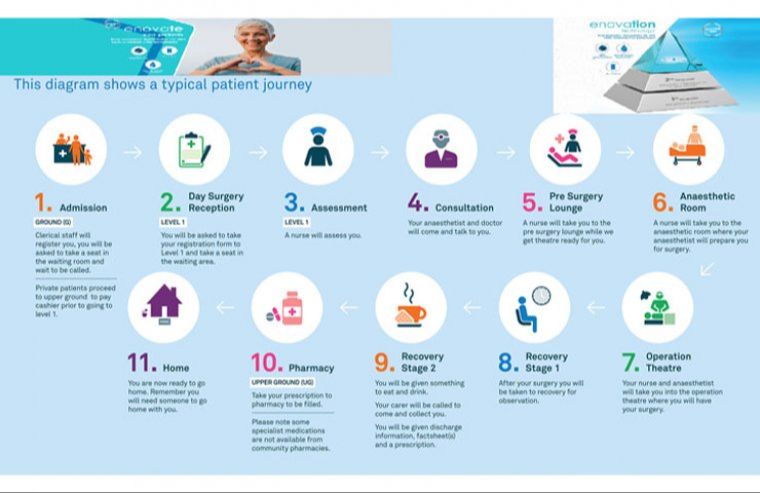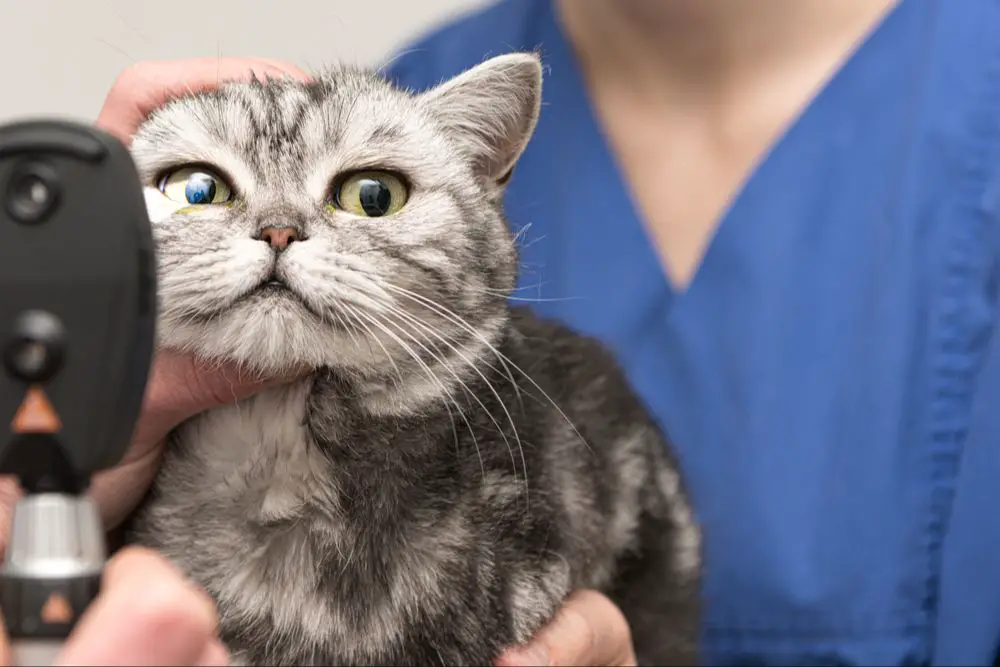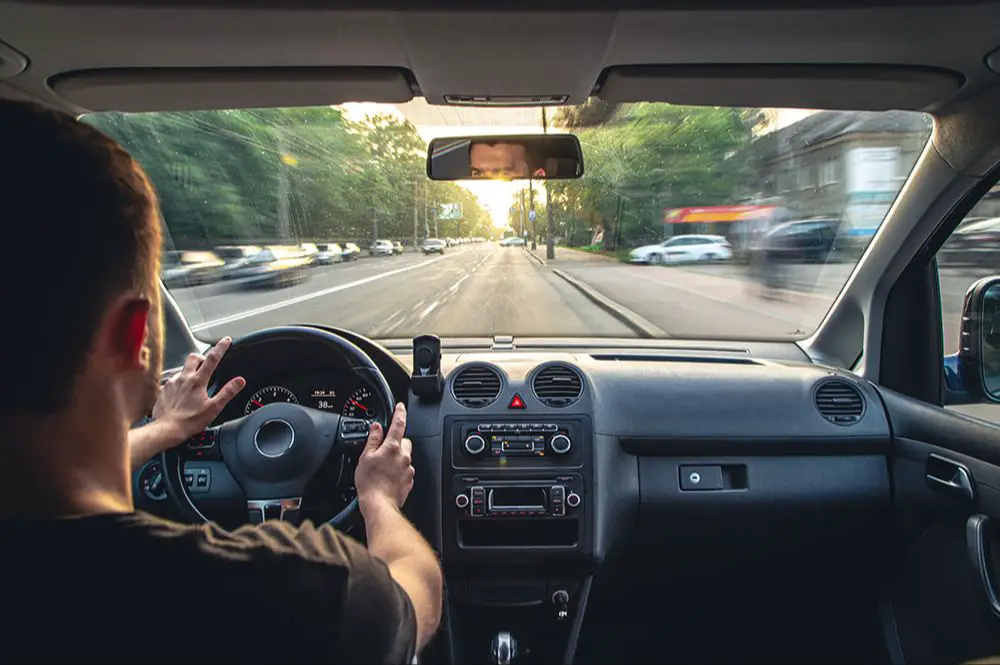Cataract surgery is a common procedure performed to remove a clouded lens from the eye and replace it with a clear artificial lens. The surgery is done under local anesthesia and typically takes less than 30 minutes. The recovery process afterwards involves allowing the eye to heal and for vision to stabilize over the course of several weeks. Most patients experience significantly improved vision after cataract surgery. However, vision can be impaired initially after the surgery while healing occurs.
After cataract surgery, it is normal for vision to be blurry and sensitive to light. The eye needs time to adjust and heal. Swelling and inflammation inside the eye often cause blurred vision. As the swelling subsides over the first month, vision usually improves significantly. It is typical for vision fluctuations after surgery before it finally stabilizes. Most doctors recommend waiting at least 1 week before driving after cataract surgery. However, some patients wonder if it is safe to drive after only 2 days.
Why Vision is Impaired After Cataract Surgery

Cataract surgery replaces the eye’s cloudy natural lens with an artificial intraocular lens (IOL). This sudden change in the eye’s optics causes vision to be blurry and impaired in the first few days after surgery. The cornea and retina need time to adjust to the IOL and learn how to focus light properly again.
Swelling and inflammation of the cornea from the surgical incision also cause vision to be blurry. The cornea usually takes a week or two to fully heal. As this swelling subsides, vision gradually improves.
The brain also needs time to neuroadapt and get used to interpreting visual signals from the eye with an IOL. Complete neuroadaptation can take a few weeks to a few months. During this period, vision may fluctuate as the brain calibrates.
In addition, residual swelling in the lens capsule as well as post-op astigmatism can reduce visual acuity in the short term after cataract surgery. However, the eye eventually adjusts and vision improves within a few months.
Factors that Determine When You Can Drive
There are a few key factors that determine when it is safe to drive after cataract surgery:
Vision requirements for driving – Most states require at least 20/40 vision in at least one eye in order to legally drive. Some states require 20/50 vision or better. Your ophthalmologist will test your vision and determine if you meet the requirements.
Cited from: https://centerforsight.net/can-you-drive-after-cataract-surgery/
Healing from surgery – It takes time for your eye to heal and for your brain to adjust to the improved vision after cataract removal. Your doctor will evaluate your healing and determine when it is safe for you to drive.
Type of cataract surgery – The newer less invasive procedures like phacoemulsification have shorter recovery times. More complex surgeries may require more healing time before driving.
Use of prescriptions eye drops – Post-op eyedrops can cause blurred vision as a side effect. Your doctor may recommend waiting until you discontinue the drops before driving.
Overall, your ophthalmologist is the best judge of when your vision has improved enough to safely operate a motor vehicle again after cataract surgery.
Typical Recovery Timeline

The recovery timeline after cataract surgery follows some general stages, though it can vary from patient to patient.
In the first 24 hours after surgery, vision is usually cloudy and the eye will be sensitive to light. Most patients go home with an eye shield to protect the eye as it begins healing. It’s normal for vision to be blurry during this time (Illinois Eye Center).
After 24 hours, discomfort and light sensitivity typically improve. The eye shield can usually be removed. Vision will start to clear but may still seem cloudy, hazy or distorted. As the eye continues healing over the next several days, vision should gradually improve.
One week after surgery, vision is often significantly better, though still not perfect. Most patients can return to basic daily activities at this point, however vision may still fluctuate for several weeks as the eye fully heals (Eye Center of Texas).
Complete recovery usually takes around 6-8 weeks. Vision will continue improving during this time until it stabilizes by about 2 months after surgery.
Vision After 2 Days
Most patients experience significant improvements in their vision within 2 days after cataract surgery. However, vision is often still recovering at this point and may be blurry, sensitive to light, or unable to focus well on near objects.
The surgery replaces the cloudy natural lens with an artificial intraocular lens (IOL). However, there is residual swelling and inflammation of the eye tissues that can take a week or two to fully resolve. This normal post-operative inflammation causes blurriness as the eye heals.
Patients also receive antibiotic and anti-inflammatory eye drops to aid healing. These drops also cause temporary blurred vision. In addition, the brain needs time to adjust to the new lens and learn how to process visual input again after years of a clouded lens.
So while vision is better than prior to surgery, most patients still have functional visual deficits 2 days after cataract surgery. Vision may fluctuate, being a little better in the morning and worsening throughout the day as the eye tires. Reading, driving, and other visually intensive tasks remain challenging. Full restoration of visual acuity often takes 1-2 weeks on average.
According to Loden Vision Centers, while vision is improving by 2 days, patients still have cloudy vision and trouble focusing up close during the initial recovery period (https://rocketreach.co/loden-vision-centers-profile_b5c80493f42e3470).
Doctor’s Recommendations
Your doctor’s advice is key in determining when it is safe to drive after cataract surgery. Most doctors recommend waiting at least 1 week before driving, but some may advise waiting 2 weeks or longer, depending on the type of cataract surgery performed and your individual recovery https://www.eyesurgeryguide.org/how-long-after-cataract-surgery-can-you-drive/. Your doctor will examine your vision and ensure your eyes are healing properly before giving the green light to drive. They want to make sure your vision meets the legal requirements for driving and that you can safely operate a vehicle without risk.
Some key factors doctors consider are your visual acuity and contrast sensitivity after surgery. Your doctor will test these vision aspects, and if they are significantly impaired after 2 days, your doctor will likely recommend waiting longer before driving. Doctors also want any eye inflammation and discomfort to resolve before driving. Your doctor may advise using medicated eyedrops to help improve vision and reduce inflammation during the recovery period.
Ultimately your doctor’s guidance takes precedence over any general timelines. The average recovery differs for each patient, so discuss your specific symptoms and concerns with your doctor. Ask when they recommend you can start driving again based on your progress and vision capabilities after surgery. Follow their expert advice to ensure your safety and achieve the best possible outcome.
Testing Your Vision Before Driving

It’s crucial to test your vision at home before getting behind the wheel after cataract surgery. Here are some simple at-home assessments you can do to determine if your vision is ready for driving:
Reading Test: Sit in a chair and have someone hold a newspaper around 15 feet away. You should be able to read the headlines and text easily at this distance. If the words appear blurry or you strain to make them out, your vision may not be road-ready yet.
Street Sign Test: Look out a window at street signs about 50 feet away. You should be able to easily read the street names and see them clearly. Squinting or struggling is a sign your vision needs more recovery time.
Depth Perception: Hold your finger about 12 inches in front of your face. Now alternate closing each eye while focusing on your finger. Your finger should remain at the same distance with both eyes open and closed. If the finger’s position shifts, it indicates compromised depth perception.
Night Vision: In a dimly lit room at night, move around and determine if your vision adjusts to the low light. You should be able to navigate without issue. Difficulty seeing in the dark means you may want to avoid night driving.
Peripheral Vision: Cover one eye and stare straight ahead. Have someone hold up fingers in your peripheral vision. You should be able to identify when fingers are shown without moving your eye. Poor peripheral vision with either eye is a hazard for driving.
If you struggle with any of these tests, continue resting your eyes until you can pass them consistently. It’s always safest to wait for your follow-up exam, but these at-home checks can give you an idea of whether your vision has recovered enough for driving. Discuss the results with your eye doctor before getting back behind the wheel.
Precautions if Driving After 2 Days
If you plan to drive 2 days after cataract surgery, it’s crucial to take precautions for your safety and the safety of others on the road. Here are some tips:
- Get approval from your eye doctor first. They will assess your vision and determine if it’s adequate for driving.
- Only drive short distances and in optimal conditions at first. Avoid driving at night, in bright sunlight, or in heavy traffic.
- Have a passenger come along, so they can assist with checking for oncoming vehicles, traffic lights, or signs.
- Wear sunglasses to reduce glare that can impair recovery.
- Adjust your seat, mirrors, and air vents properly so you don’t strain to see.
- Take breaks often to rest your eye if you experience blurriness, fatigue, or discomfort.
- Avoid complicated driving maneuvers like merges, lane changes, or parking in tight spaces.
- Pay close attention and drive slower than usual.
- Do not drive if you have pain or vision problems after surgery.
While it may be possible to drive 2 days after cataract surgery, it’s best to follow your ophthalmologist’s guidance. They can check if your vision meets the legal requirements for driving and help determine the right timeframe for your situation.
Alternative Transportation Options

If driving is not recommended 2 days after cataract surgery due to impaired vision, there are other transportation options to consider:
- Ask a friend or family member for a ride. They can drive you to appointments, errands, and other places you need to go while your vision recovers.
- Use a rideshare service like Uber or Lyft. You can request a car on-demand through their mobile apps.
- Call a taxi or car service. Many cities have taxi companies or private car services you can schedule rides with.
- Use public transportation if available. Buses, trains, and subways may be an option depending on your city.
- Schedule medical transportation. Some healthcare providers offer transportation to and from medical appointments.
- Hire a driving service or companion. They can provide personalized transportation and assistance.
Planning alternative transportation for the first few days after cataract surgery can help you avoid driving with impaired vision. Focus on safe options that accommodate your limited eyesight during the initial recovery period.
Conclusion
Cataract surgery significantly impairs vision and takes time to fully recover from. While some people may feel ready to drive after 2 days, most doctors recommend waiting at least 1 week before driving, to allow proper healing and adjustment to new lens implants. The decision depends on multiple factors like type of cataract procedure, speed of recovery, and results of vision tests. If given the okay by your surgeon, driving short distances in optimal conditions may be possible after 2 days, but caution is advised. For best results, arrange alternative transportation during the first week of recovery. With patience and care, your vision can steadily improve until driving is safe again.
The key factors in deciding when to drive after cataract surgery are: following your doctor’s guidance, passing vision tests at required levels, allowing time for surgical wounds to heal, adjusting to new lens implants, and not rushing the recovery process. Put safety first by waiting until your surgeon greenlights driving, your vision meets legal requirements, and you feel fully confident in your vision. With time, your sight can return to normal or better than before surgery.

